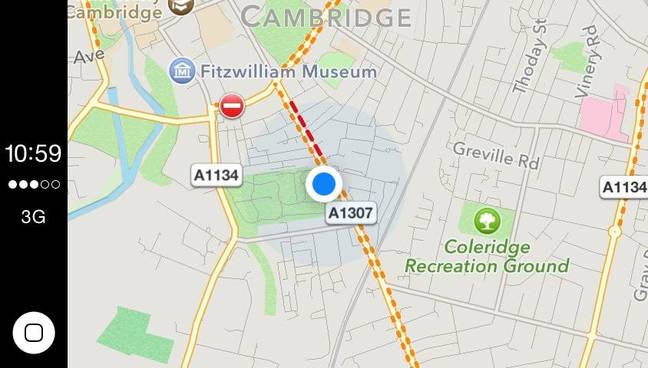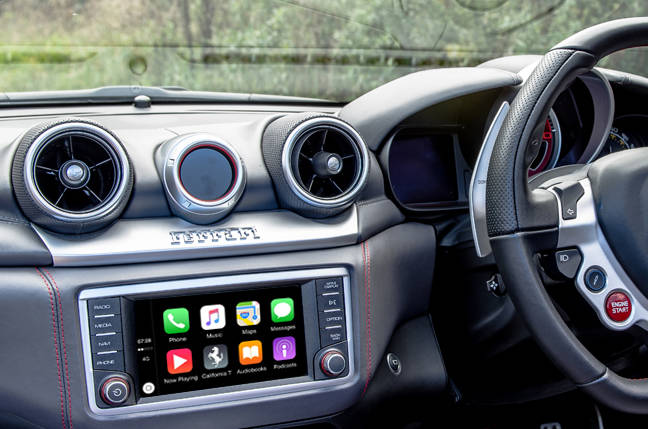This article is more than 1 year old
Testing CarPlay with Apple’s most expensive ever accessory
Of course Ferrari drivers use iPhones. Isn’t it obvious?
Apple Maps still hasn’t found its way
We managed “enjoy” a great driving road, following Apple Maps, while juggling two text conversations and a phone call, with very little need to do anything other than use Siri. Driving a Ferrari might be about “me” time but if you are a captain of industry it’s good to know that you can do important work, or perhaps sort out the training for your polo ponies, while traveling.
Rich people, even retired rich people, tend to be very time poor. The only downside to Siri is that the voice recognition is off-board so if you lose the internet connection on some minor road, like the M1, you’ve lost Siri.
There were some inconsistencies; after Siri finished reading out a text message the radio failed to resume, but when a phone call came in and was then terminated the radio did start. This happened a few times and we don't think it is attributable to the car having diabolically bad DAB reception.
Where CarPlay fails the Ferrari philosophy is in having to look left to see the Apple map. Most high-end cars give the next sat-nav direction in a screen in the drivers binnacle, some even on a heads up display. Looking to the left to follow a map is far from ideal. It really needs better integration.
Hosking has built a model on how the humans see things, the difference between peripheral, binocular and central vision. Just as the iPhone is doing the work for CarPlay, the brain is doing the work for the eyes. “It’s not seeing is believing, but believing is seeing”, and putting important, time-sensitive information in the periphery is not a good thing.

Then there is the issue that Apple Maps really isn’t very good. It’s well behind Google and a very long way behind HERE. Ferrari was at pains to point out that, for example, the routing to the nearest (unknown) petrol station, or failing to find the nearest Ferrari dealer, was an Apple issue and not theirs.
Apple maps even put the location of the Ferrari UK office on the wrong side of the road.
Ultimately, Ferrari has an advantage in all this. The company can be single-minded about the choice of devices its customers use. Some will find that their iPhone is so much a part of their lives they will choose the Ferrari over other things in their garage precisely because they can use CarPlay.
Other manufacturers will have to appeal to a broader church, and many are looking at having support for Android Auto, CarPlay and their own systems all in the car at the same time. And you can’t charge people for the ones they don’t expect to use but the software and its maintenance does add to the bill of materials.
In most cases car companies will run QNX with Android Auto and CarPlay on top so upping the processor requirement.

CarPlay in a dash, Ferrari California style. Image by © Guy Swarbrick.
It also needs better screens and connectors. Car manufacturers become prey to the changing whims of the phone companies as goalposts move. Abstracting the processing to the handset adds some future-proofing but a car like the California will last pretty much forever. Ferrari offers free roadside assistance to owners of cars back to 1946.
Expecting Apple to keep the same connector for seventy months let alone seventy years is a tall order. All this cost and complexity is a problem to which even Siri doesn’t have an answer. ®
